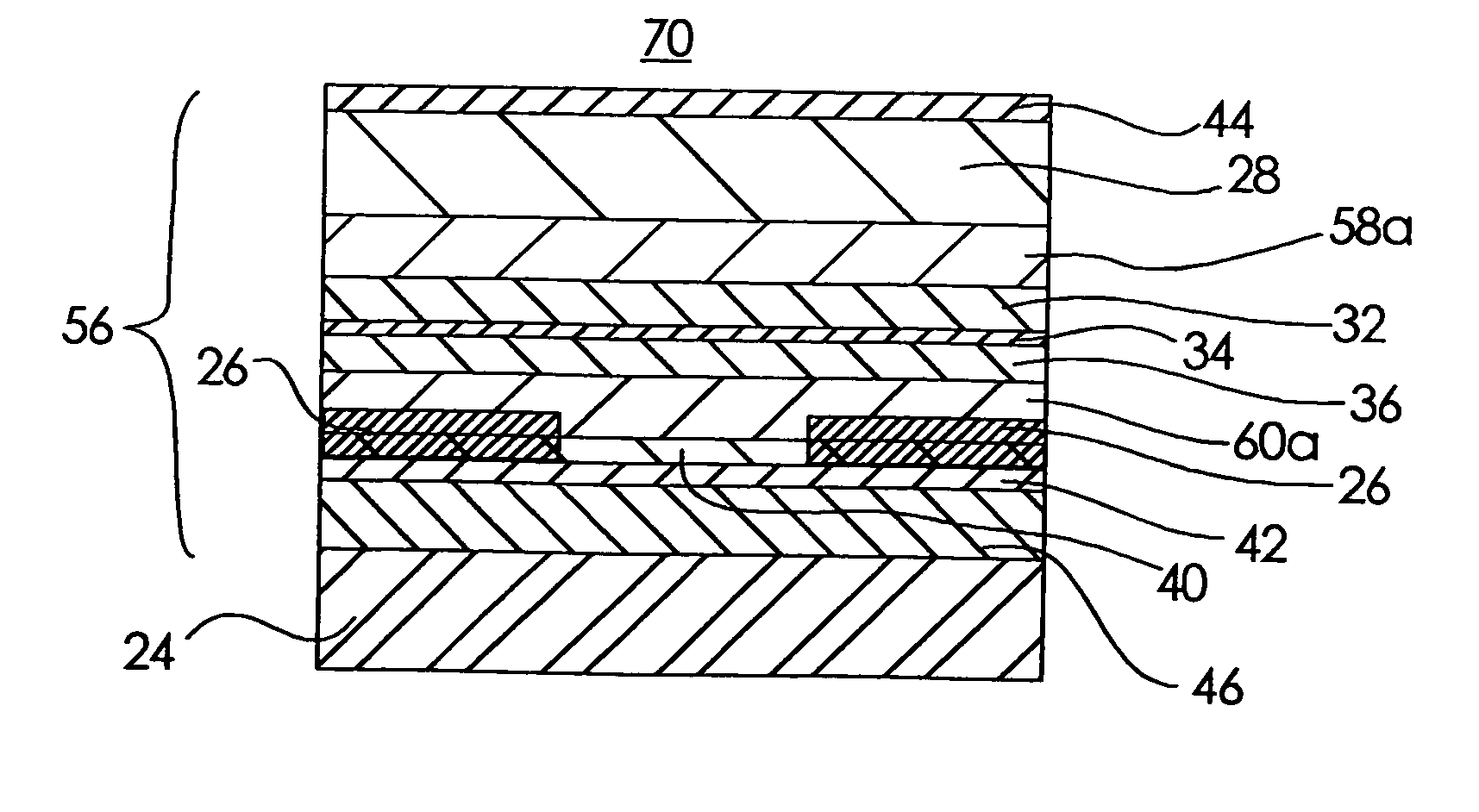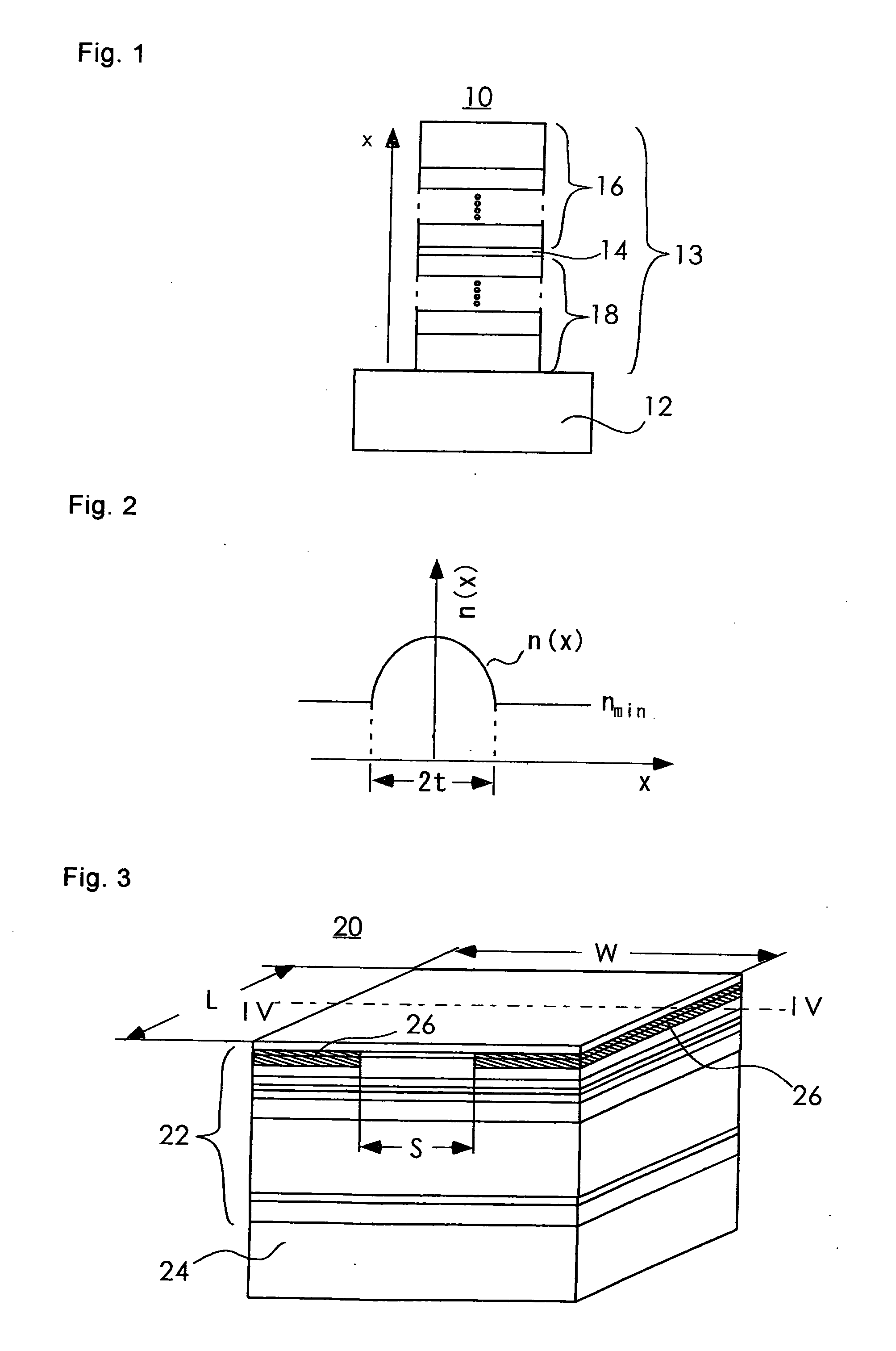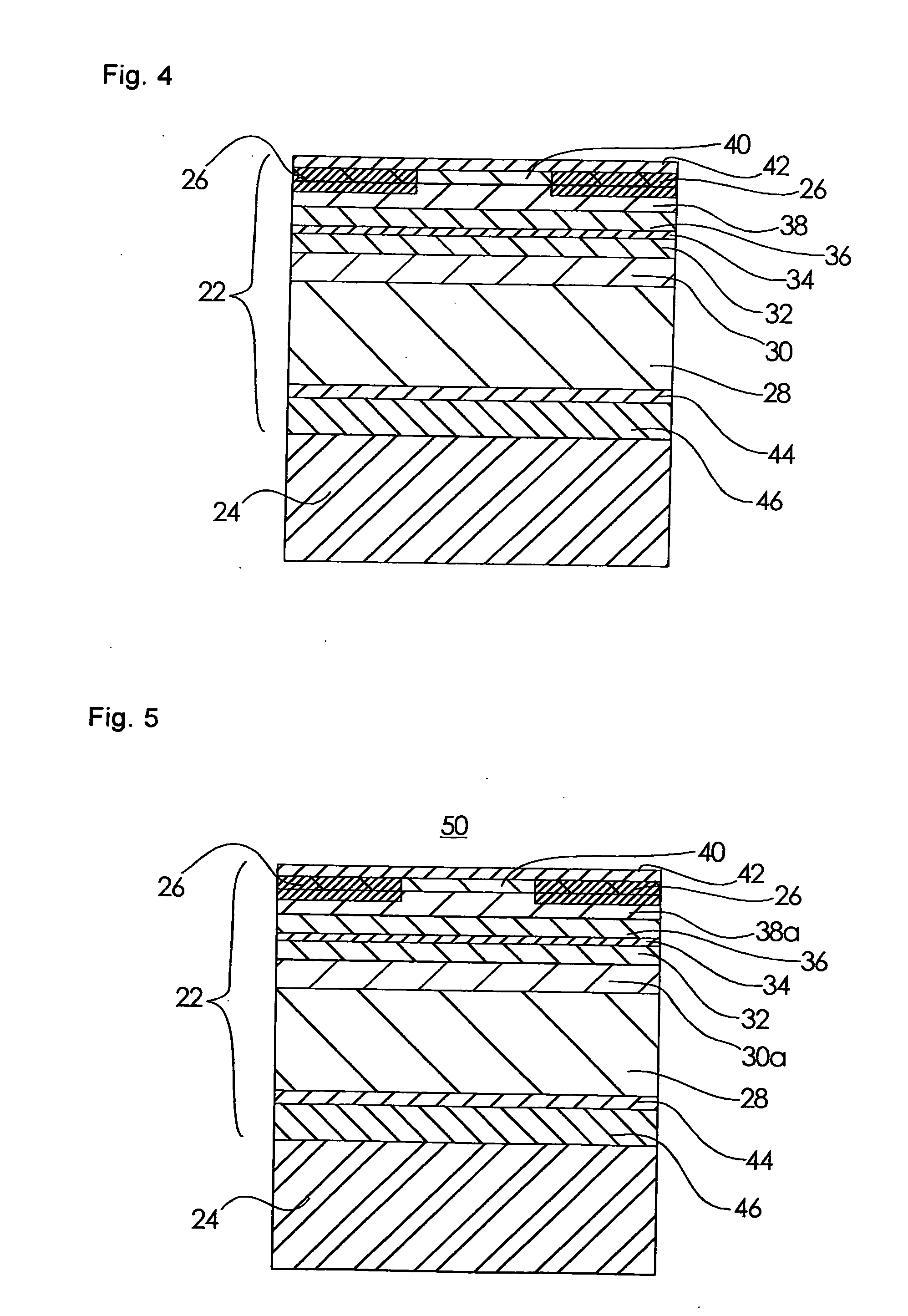Semiconductor laser device
a laser device and semiconductor technology, applied in the direction of lasers, semiconductor devices, semiconductor lasers, etc., can solve the problems of reducing the aspect ratio, kink level and other aspects, and disadvantageous configuration for the transfer of heat to the radiating body, so as to improve the transfer of heat, enhance reliability, and lessen the end-face degradation
- Summary
- Abstract
- Description
- Claims
- Application Information
AI Technical Summary
Benefits of technology
Problems solved by technology
Method used
Image
Examples
first embodiment
[0042]FIG. 1 is a typical diagram of a semiconductor laser device according to one embodiment of the present invention. FIG. 2 is a typical diagram showing a refractive index distribution of semiconductor layers of the semiconductor laser device according to the present invention.
[0043] The first embodiment will explain a basic configuration containing even embodiments from a second embodiment.
[0044] In FIG. 1, the semiconductor laser device 10 comprises a heat sink 12 used as a radiator or radiating body, and a semiconductor laser element 13 disposed on the heat sink 12. The semiconductor laser element 13 is constituted of a semiconductor layer 16 and a semiconductor layer 18 laminated on each other with an active layer 14 interposed therebetween. The semiconductor layer 16 is provided on the side opposite to the heat sink 12 with respect to the active layer 14 and the semiconductor layer 18 is provided on the heat sink 12 side with respect to the active layer 14, respectively.
[...
second embodiment
[0063]FIG. 3 is a perspective view of a semiconductor laser device according to one embodiment of the present invention. FIG. 4 is a cross-sectional view of the semiconductor laser device as viewed in a cross-section taken along line IV-IV of FIG. 3.
[0064] The second through fifth embodiments will explain, as an example, a semiconductor laser device used as an excitation light source of a solid state laser whose oscillation wavelength lies in the neighborhood of 810 nm, e.g., a YAG laser used for metal welding and cutting-off.
[0065] In FIG. 3, the semiconductor laser device 20 is formed of a semiconductor laser element 22 and a CuW heat sink 24 used as a radiating body or radiator. Hatched portions are proton injection regions 26 for current restriction. The hatching shown in FIG. 3 does not show a cross-section. A portion pinched between the proton injection regions 26 is a stripe corresponding to a region in which a current flows. The width of the stripe is expressed in S. In th...
modification 1
[0085]FIG. 5 is a cross-sectional view of a modification of the semiconductor laser device according to one embodiment of the present invention. Since FIG. 5 is also basically identical in configuration to FIG. 2, the position of a section of FIG. 5 also corresponds to the section taken along line IV-IV of FIG. 3. Incidentally, the same reference numerals in the respective drawings indicate the same or equivalent ones.
[0086] The semiconductor laser device 50 shown in FIG. 5 is different from the semiconductor laser device 20 in that an n-AlGaAs cladding layer 30a is configured with its Al composition ratio as x=0.90 and its thickness as t=0.4 μm, and a p-AlGaAs cladding layer 38a is configured with its Al composition ratio as x=0.55 and its thickness as t=2.0 μm. The semiconductor laser device 50 is identical in other configuration to the semiconductor laser device 20.
[0087] Even in the case of the semiconductor laser device 50 as well as in the case of the semiconductor laser dev...
PUM
 Login to View More
Login to View More Abstract
Description
Claims
Application Information
 Login to View More
Login to View More - R&D
- Intellectual Property
- Life Sciences
- Materials
- Tech Scout
- Unparalleled Data Quality
- Higher Quality Content
- 60% Fewer Hallucinations
Browse by: Latest US Patents, China's latest patents, Technical Efficacy Thesaurus, Application Domain, Technology Topic, Popular Technical Reports.
© 2025 PatSnap. All rights reserved.Legal|Privacy policy|Modern Slavery Act Transparency Statement|Sitemap|About US| Contact US: help@patsnap.com



